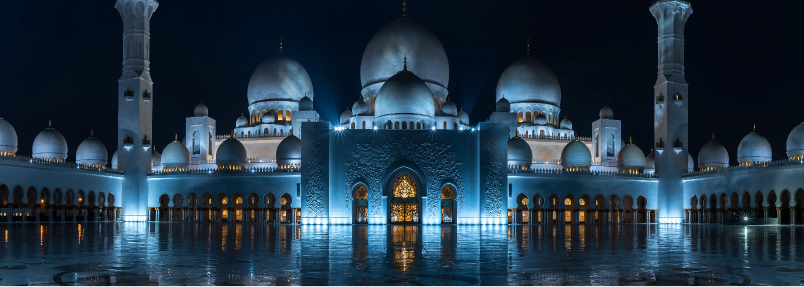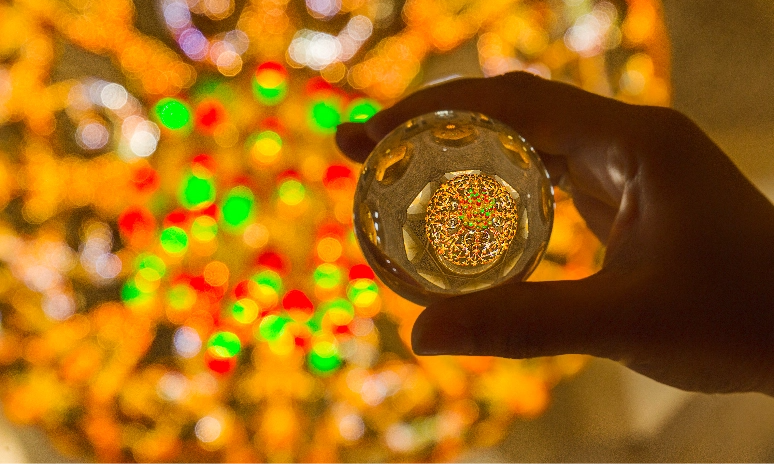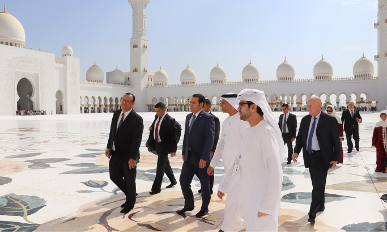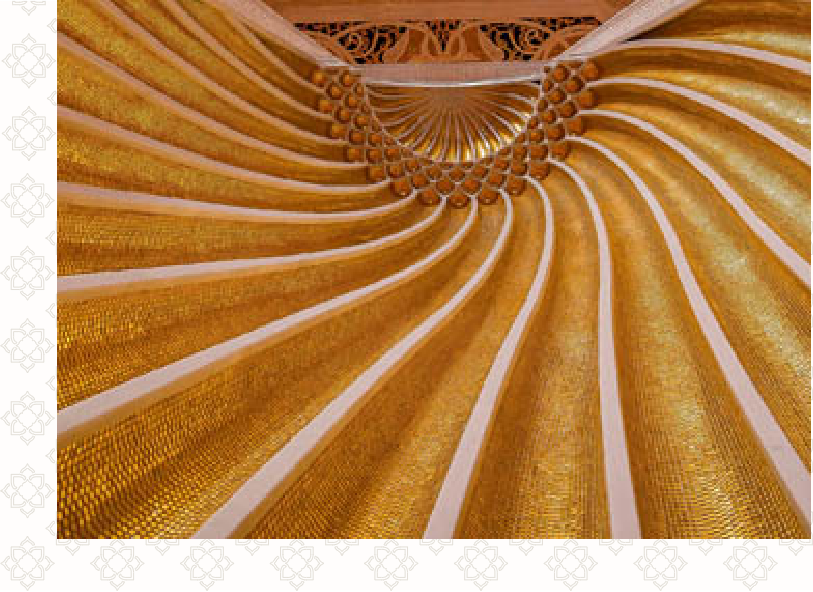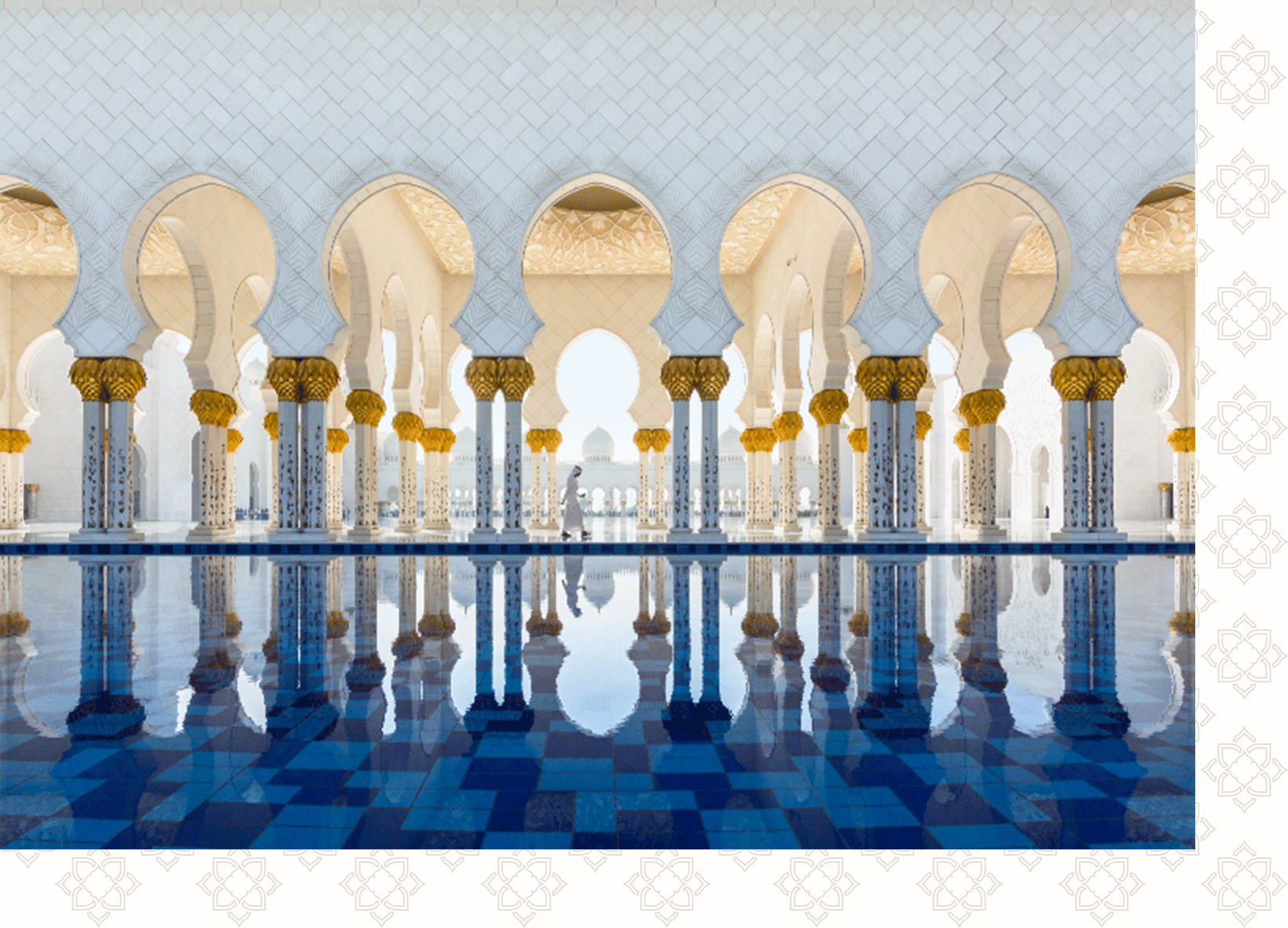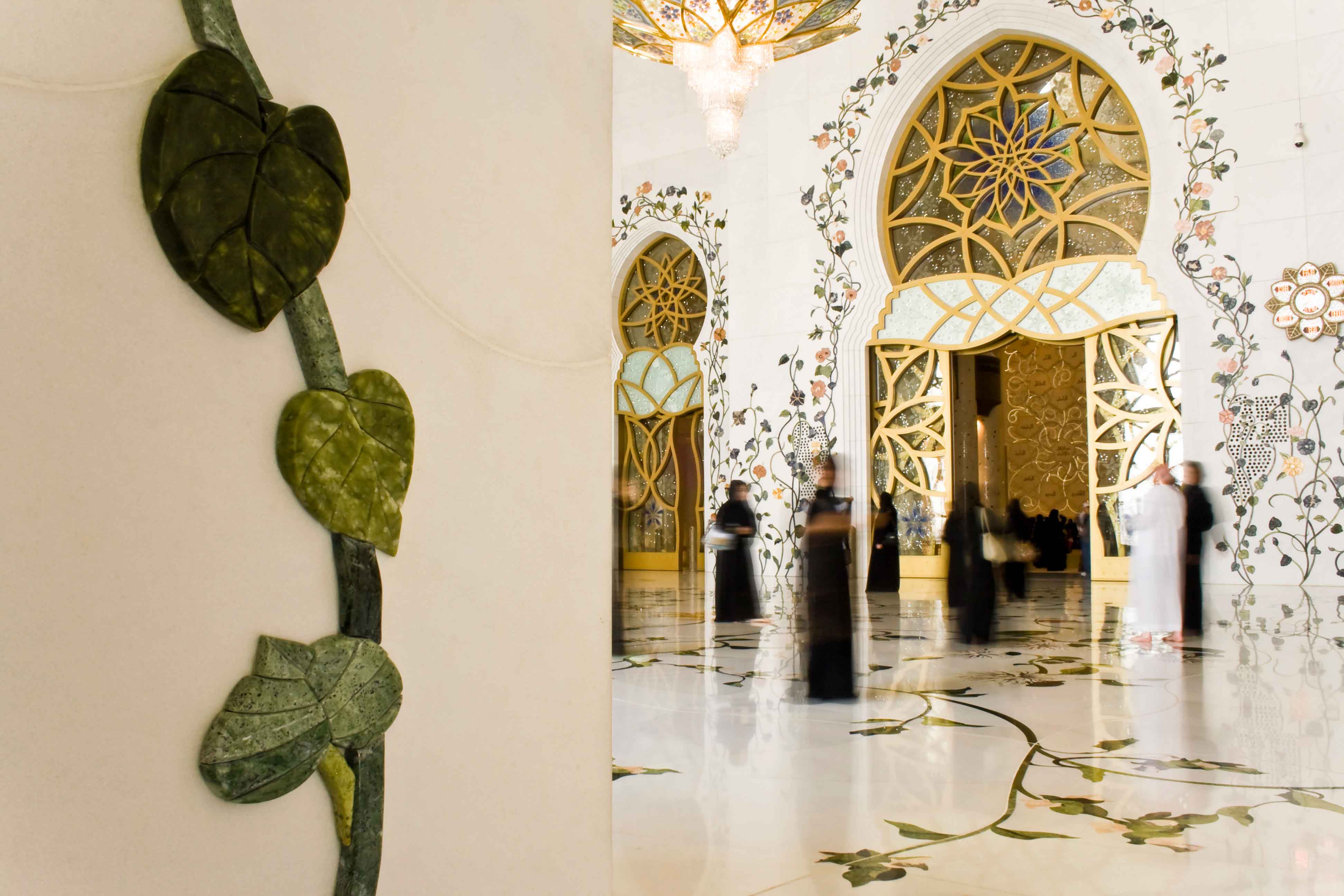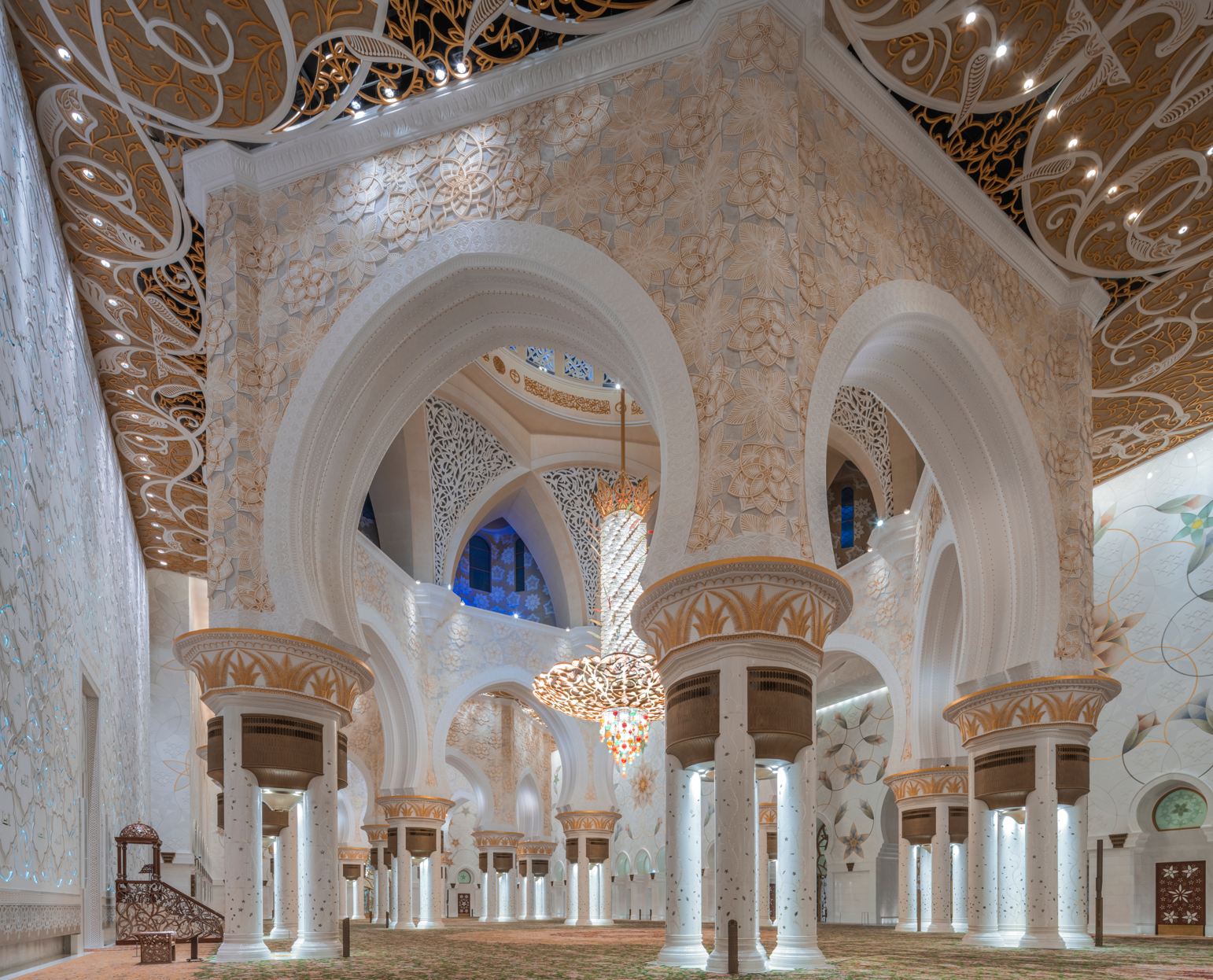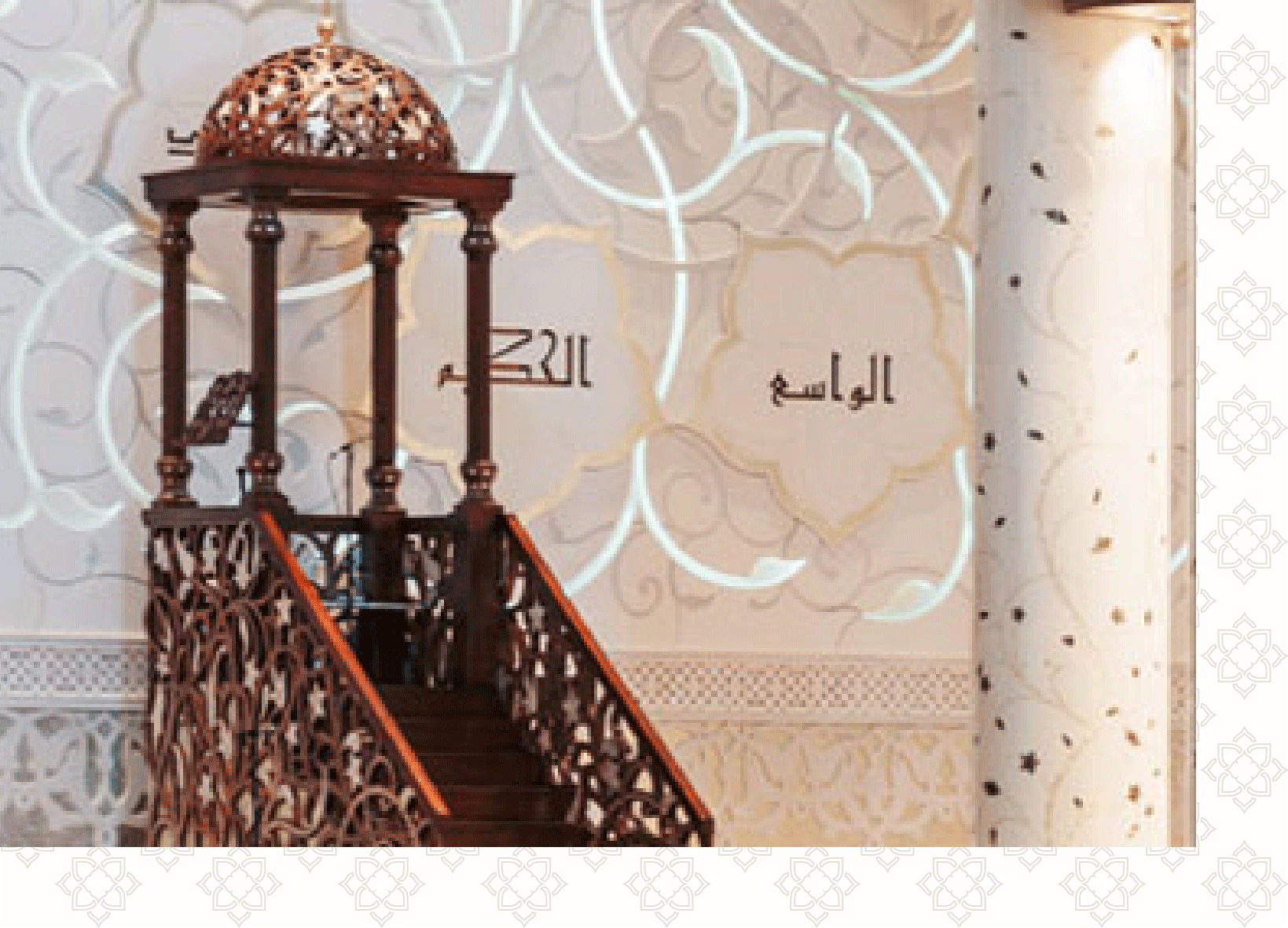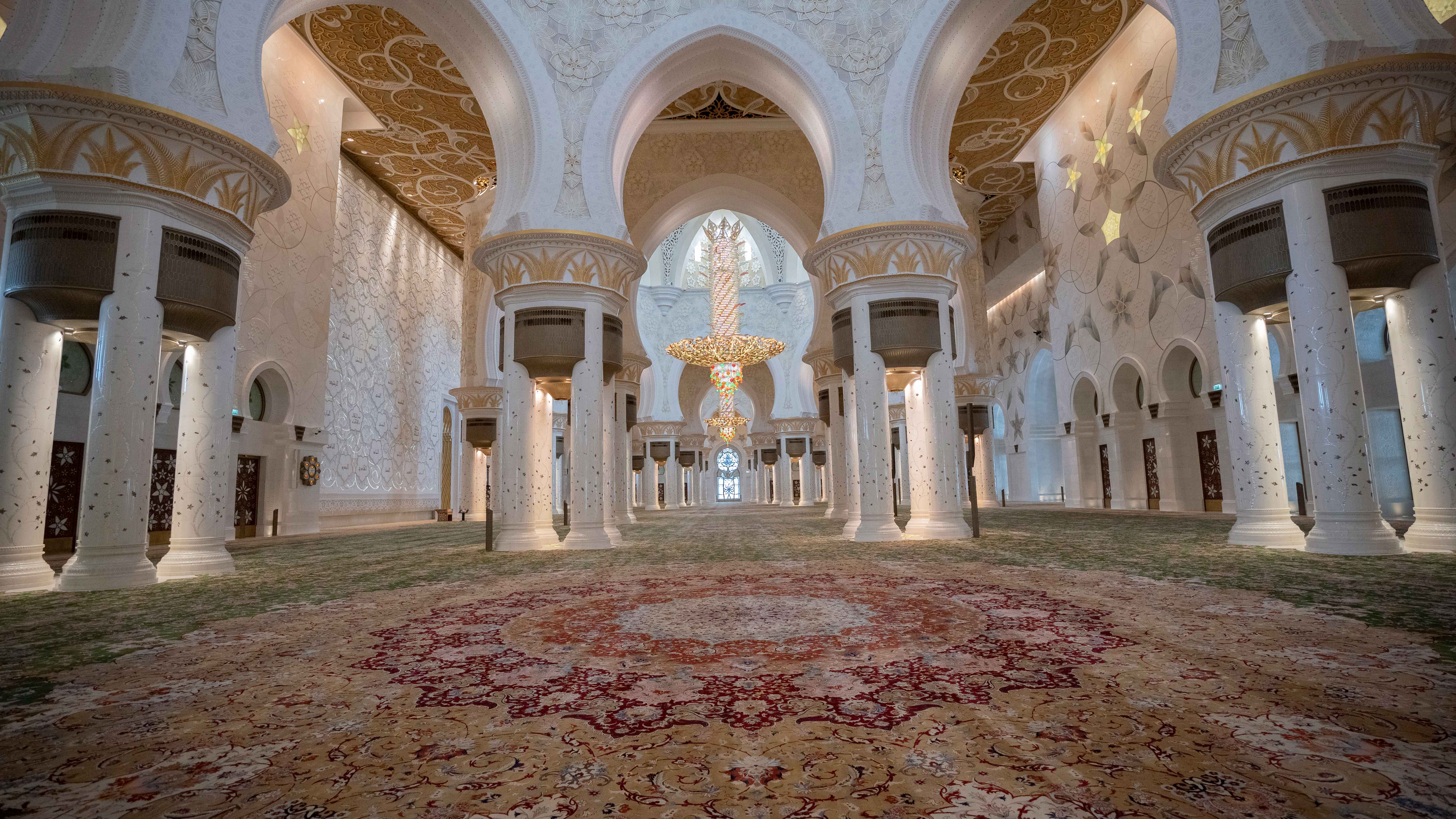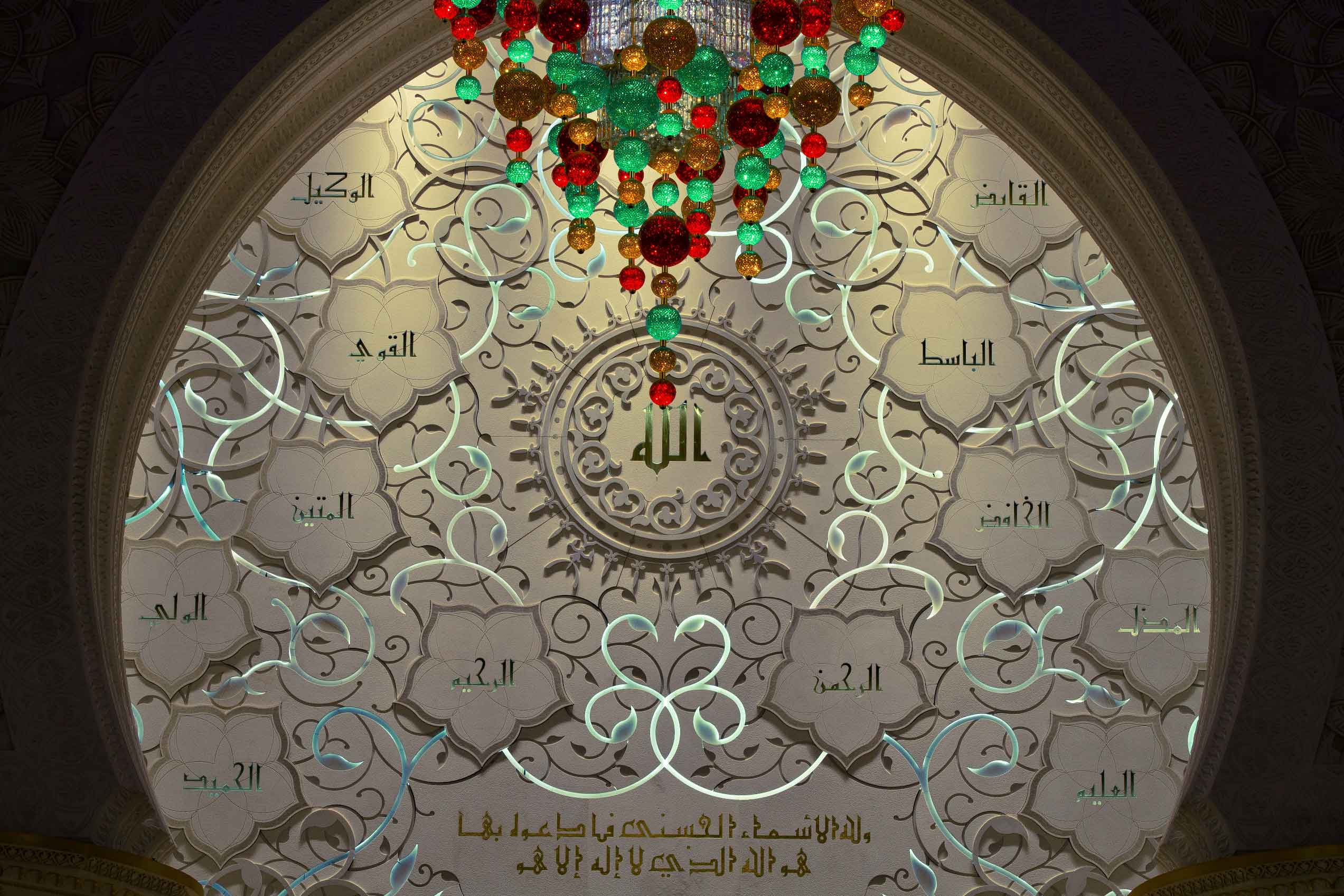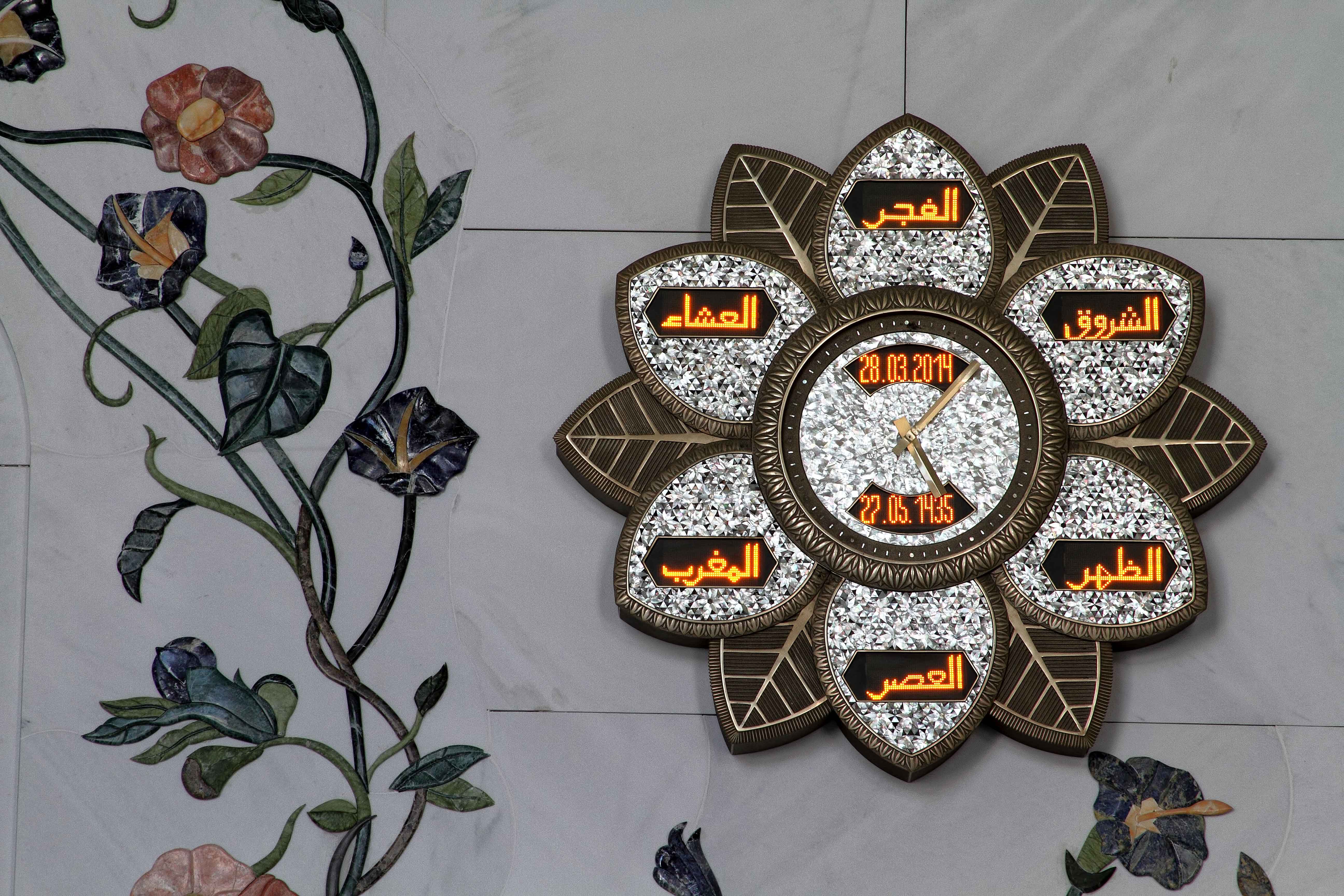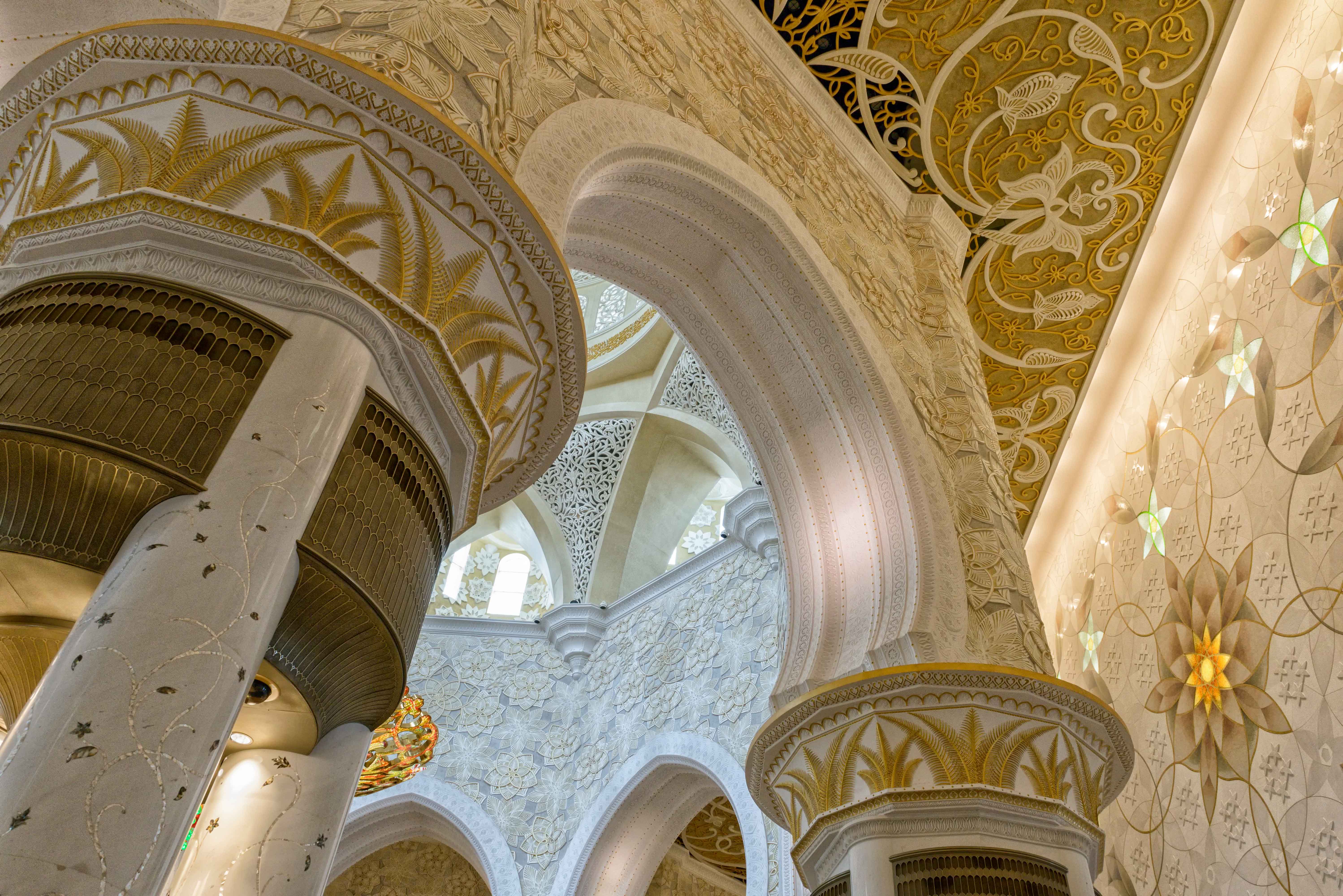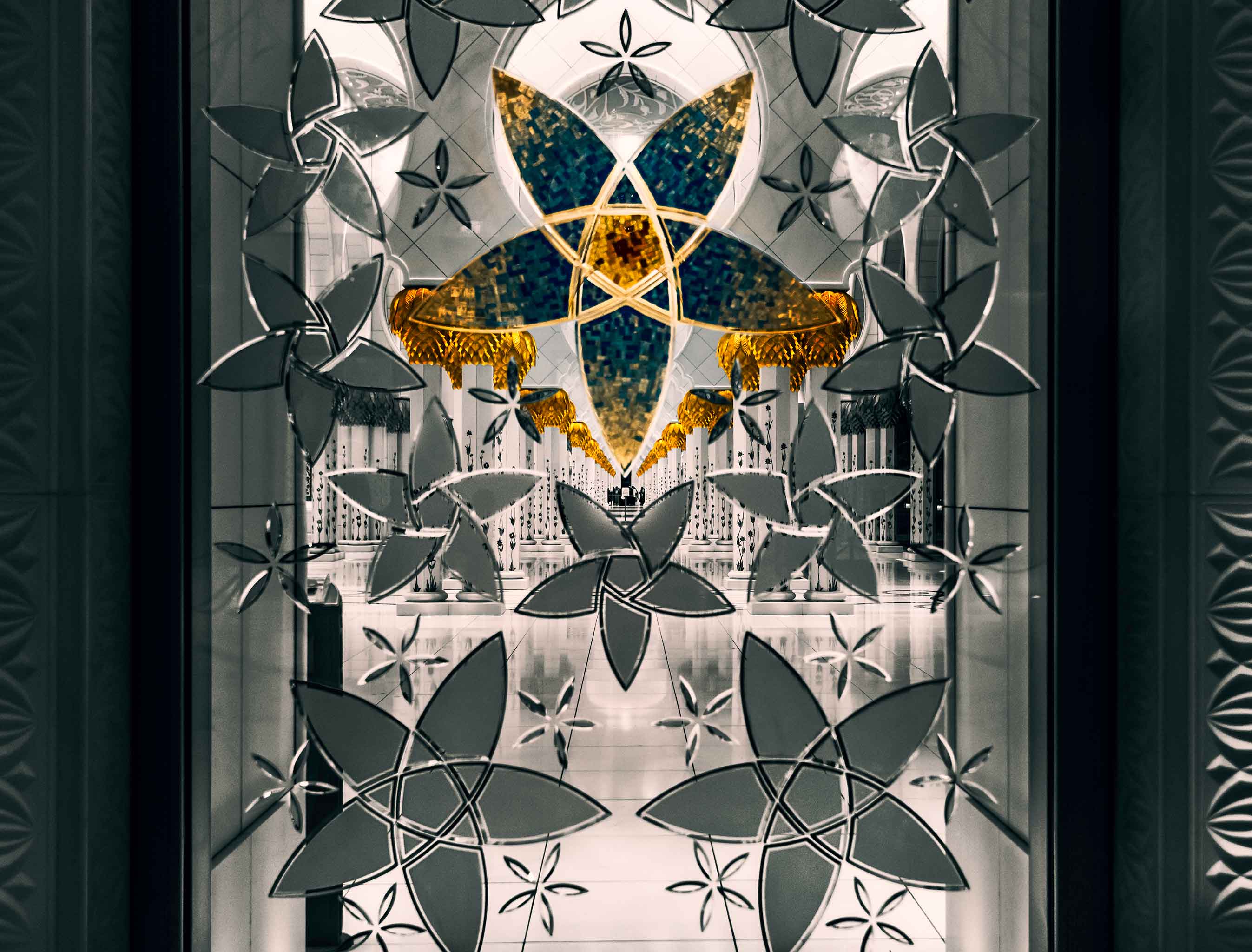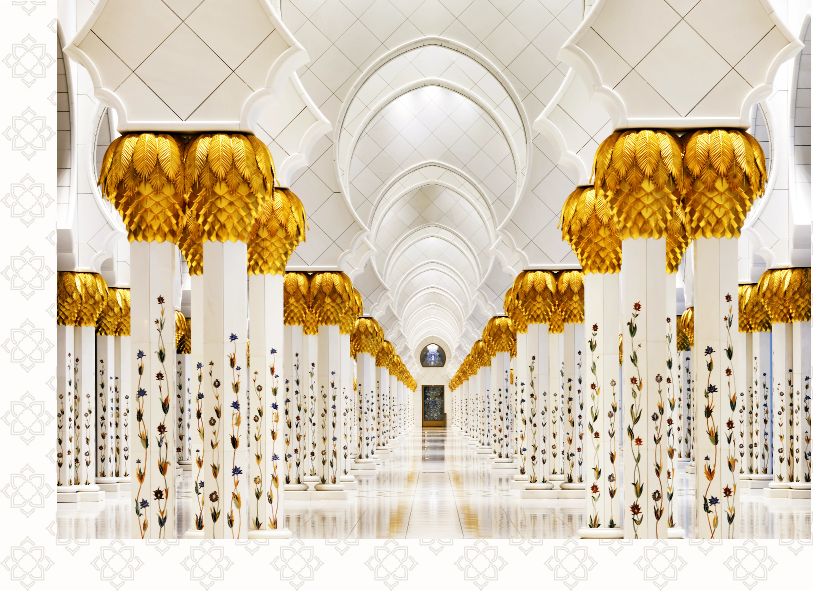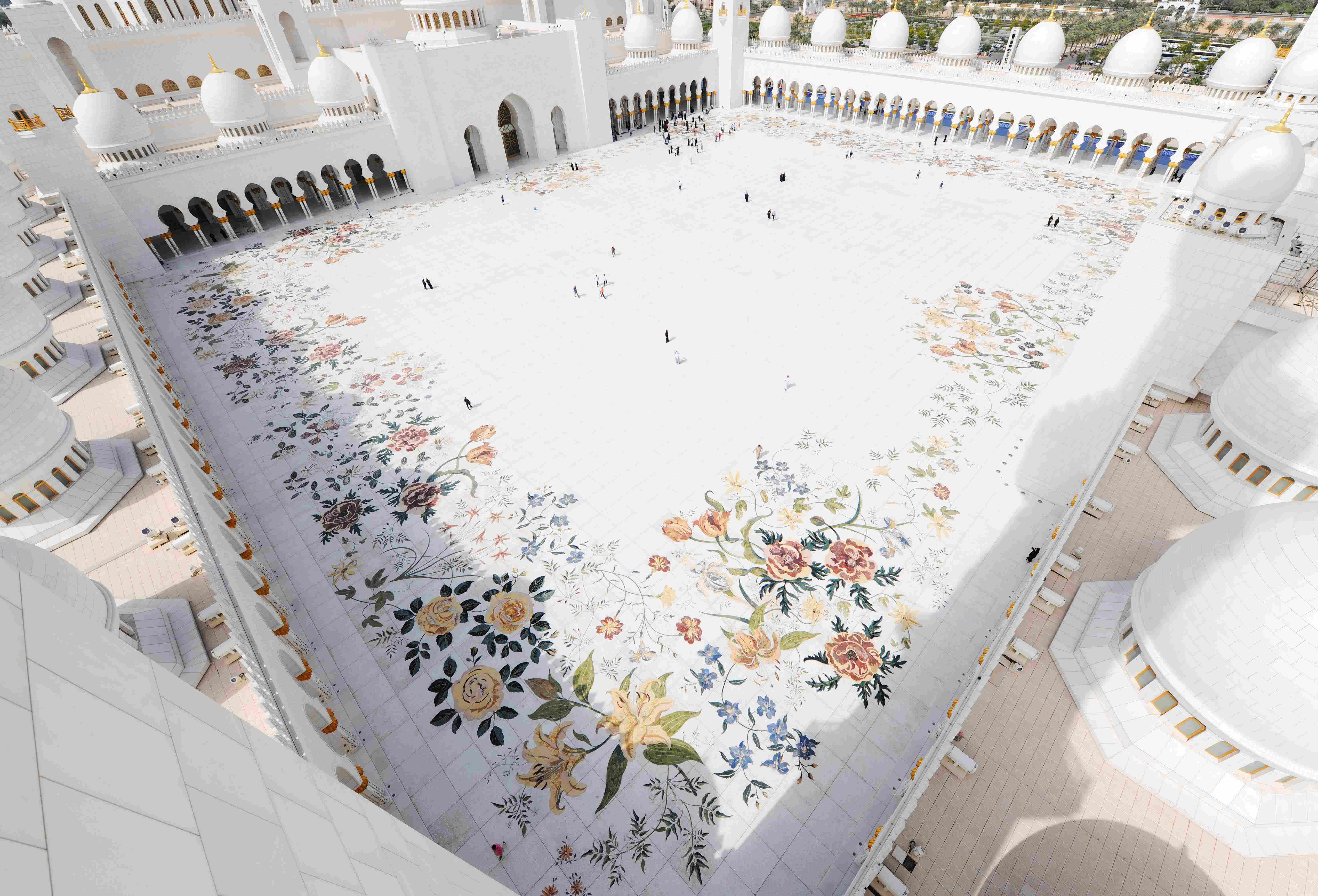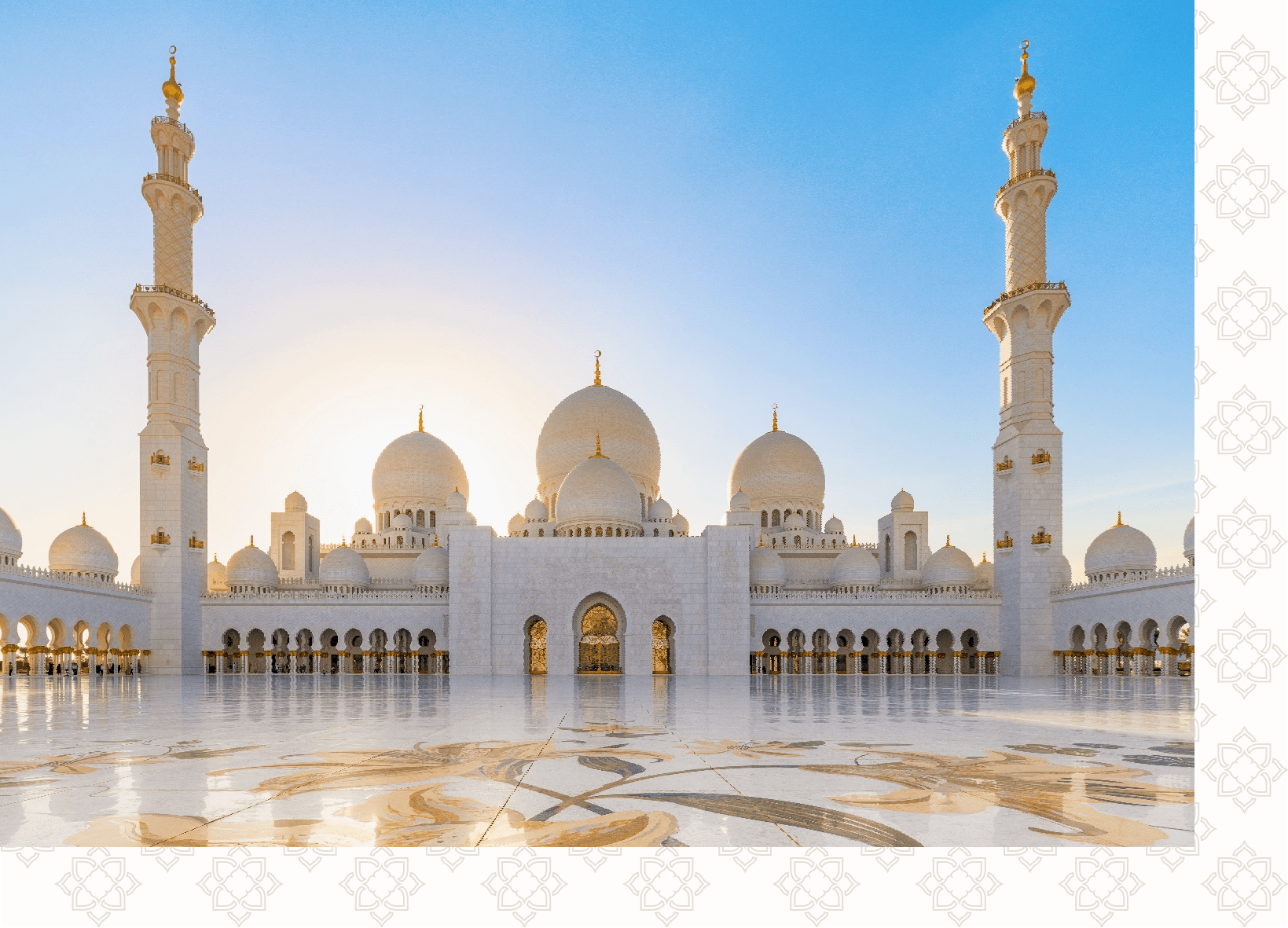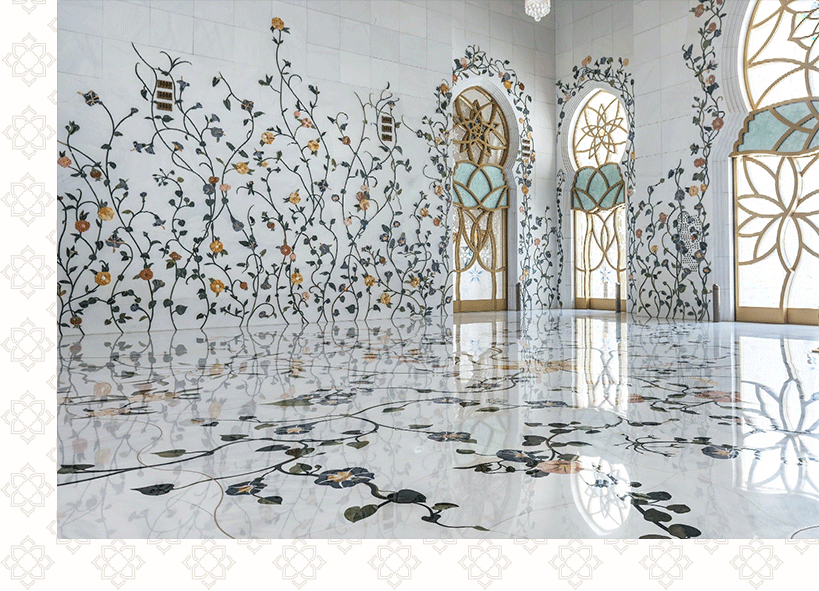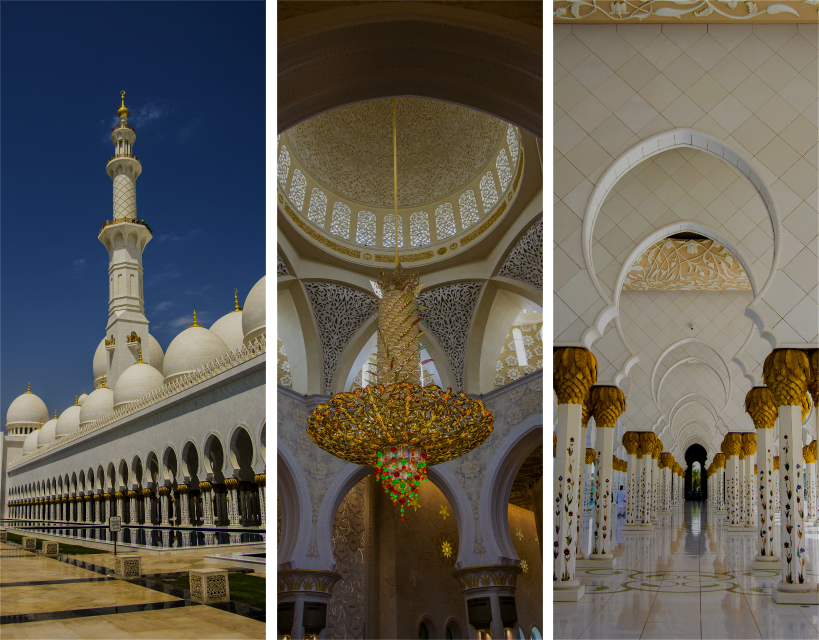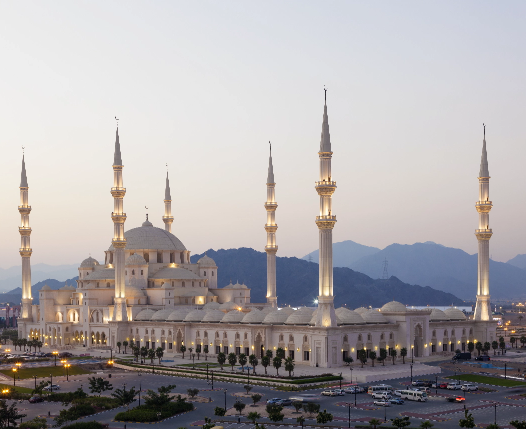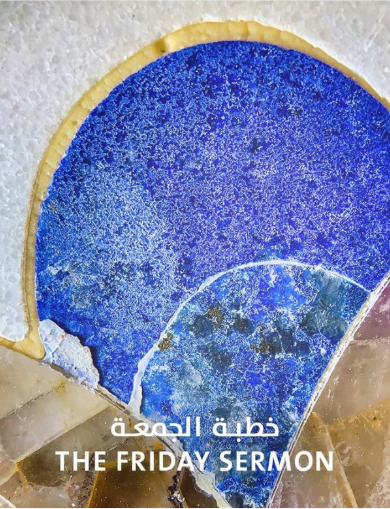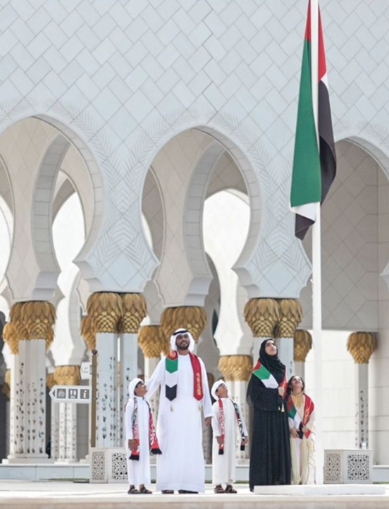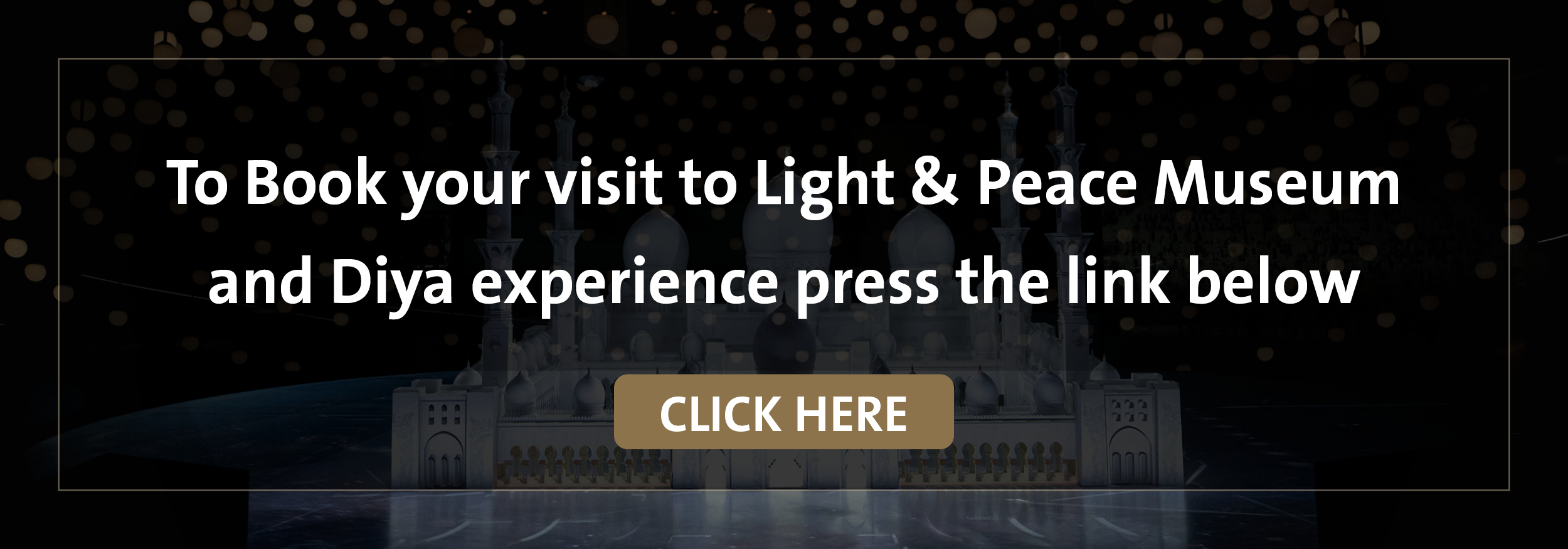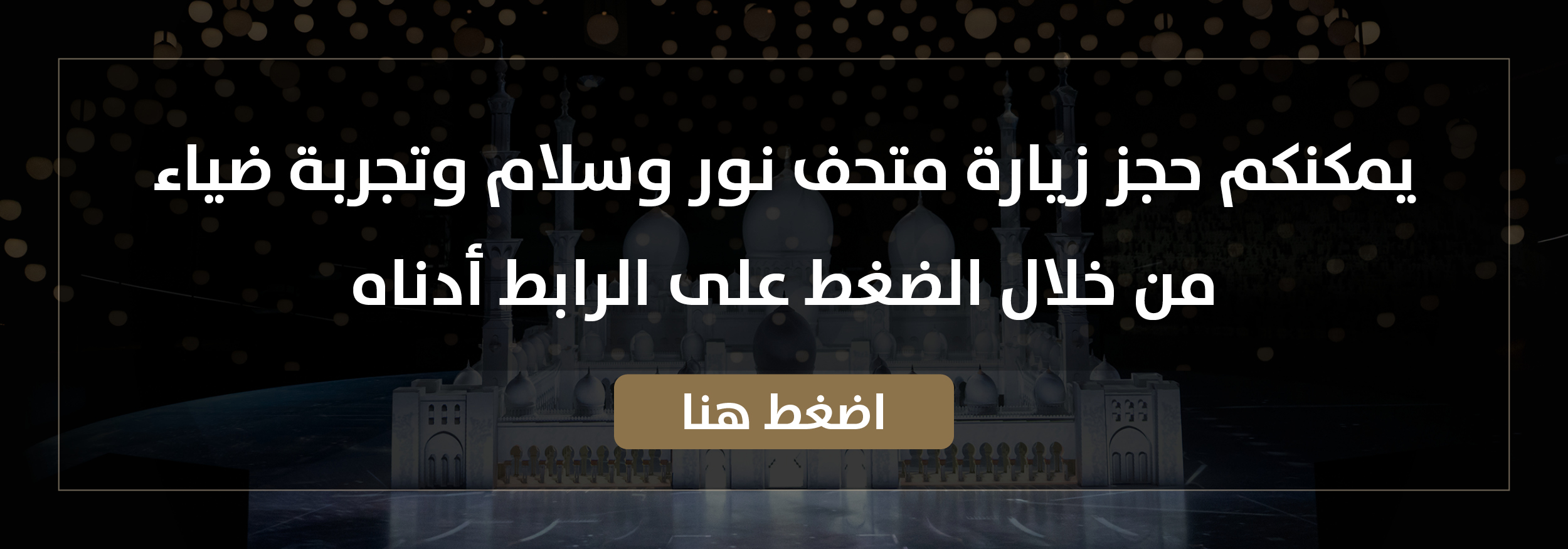Unsere Dienste
Entdecken Sie unser gesamtes Leistungsspektrum, um sicherzustellen, dass Sie ein unvergessliches Erlebnis genießen
Multimedien E-Führung
„El-Delleel“ ist ein Multimediagerät, das das Besuchererlebnis in der Moschee bereichert.
Religiöse Programme
Erfahren Sie mehr über das breite Spektrum an religiösen Programmen, die das Zentrum organisiert.
Standort
Finden Sie den kürzesten Weg zur Moschee.
KORAN-REZITATIONEN AUS DER SCHEICH-ZAYED-GROSSEN MOSCHEE
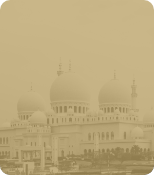
Sure Al-Baqarah
Hijri-Kalender
KALENDER ANZEIGENAl-Jami-Bibliothek
BESUCHEN SIE DIE BIBLIOTHEKAl-Jami-Markt
BESUCHEN SIE DEN MARKTNACHRICHTEN & MEDIEN

As Part of the 'Jusoor' Programme Aimed at Bridging Cultures and Nations, Sheikh Zayed Grand Mosque Centre Hosts a Delegation from Abu Dhabi Accueil for French Speakers
c
As part of the "Jusoor" programme, encompassing all initiatives, activities, and events launched by Sheikh Zayed Grand Mosque Centre to promote intercultural dialogue, foster closer ties between cultures, and enhance the UAE’s global image, His Excellency Dr Yousif Al Obaidli, Director-General of the Centre, met a delegation from Abu Dhabi Accueil. The association supports newly arrived French-speaking residents in Abu Dhabi by organising a variety of social, cultural, and recreational activities.
The Centre had previously launched the "Jusoor" programme to invite individuals and institutions from diverse cultures to participate in various activities and programmes held at the mosque. Participants are given the opportunity to explore the Centre’s core message, inspired by the vision of the late Sheikh Zayed bin Sultan Al Nahyan, the Founding Father of the UAE, and the country’s wise leadership, which aims to consolidate humanitarian values and introduce them to Emirati heritage.
The meeting, held at the Peace Dome, was particularly significant as the mosque is among the foremost landmarks visited by the French community in the UAE, including tourists and residents. Since its opening, the mosque has welcomed approximately 1,820,000 French visitors, notably including France’s First Lady Brigitte Macron, former French President François Hollande, former Prime Minister Édouard Philippe, former Foreign Minister Jean-Yves Le Drian, and Jean-Luc Martinez, President of the Louvre Museum in Paris. Additionally, in 2024 alone, the mosque hosted 124,691 visitors.
During the meeting, His Excellency the Director-General emphasised that when the late Sheikh Zayed bin Sultan Al Nahyan decided to build the mosque, he envisioned it as a meeting place for diverse cultures from around the world. This vision was realized through the mosque's construction, which incorporated elements and materials sourced from across the globe, ensuring that every visitor found a connection to their own culture or geographical region.
His Excellency the Director-General further noted that guest feedback received by the Centre through "Google Reviews" and "TripAdvisor," as well as visitor experiences from the cultural tours offered by the Centre, confirmed that the mosque has significantly contributed to fostering an accurate understanding of Islamic culture and promoting a positive image of the UAE. Visitors mentioned that, through their experience at this prominent landmark, they discovered shared elements connecting them to the region's peoples, such as arts and other aspects, and indicated they would recommend Sheikh Zayed Grand Mosque to others interested in learning about the region's culture.
His Excellency the Director-General also highlighted the "Light & Peace Museum," which houses numerous exhibits symbolising coexistence and intercultural dialogue.
Following the meeting, delegation members toured the "Light & Peace Museum," exploring its sections, collections, and activities. They were introduced to various aspects of Islamic civilisation, its rich legacy of art and science, and its enduring values of tolerance and coexistence, which have significantly influenced global cultural exchanges. The delegation also experienced "Diya – A Universe of Light," an immersive, interactive experience featuring a 360-degree multimedia presentation accompanied by sound and sensory effects, including wind, guiding visitors through an inspiring sensory journey from the star-lit cosmos to the landscapes of the UAE.
The delegation then toured the mosque’s halls and external arcades, where they learned about its civilisational message promoting coexistence, tolerance, and openness to others. They were introduced to the history behind the establishment of this iconic landmark, appreciating the aesthetic magnificence and exquisite Islamic architecture evident throughout its spaces. The visitors also admired unique collections and splendid examples of Islamic artistry and design, which, despite their diversity, seamlessly converge in the mosque’s design, embodying the harmonious blend of cultures in a single, creative masterpiece.
It is noteworthy that Sheikh Zayed Grand Mosque Centre actively participates in events organised by countries around the world, including the French Republic. A delegation from the Centre previously took part in France’s International Tourism Exhibition, "Top Resa."
Lesen Sie mehr
Under the umbrella of the 'Al Shabab Al Banie' programme and in collaboration with the Ministry of Education, Sheikh Zayed Grand Mosque Centre Organises a Series of Cultural Workshops for School Students
The Sheikh Zayed Grand Mosque Centre held two cultural workshops at the Mosque Library, attended by 39 male and female students from schools across the Emirate of Abu Dhabi. Organised in cooperation with the Ministry of Education, these sessions form part of a broader series of four cultural workshops hosted by the Centre for school students throughout April and May 2025.
The cultural workshops organised by the Centre for school students fall under the umbrella of the “Al Shabab Al Banie” programme, which focuses on youth and younger generations—whom the late Founding Father regarded as the true wealth of the nation and the architects of its renaissance. As part of this commitment, the Centre regularly organises and hosts educational and interactive activities that target various age groups, enriching their intellectual and cultural awareness.
These efforts aim to help shape a promising generation of young people by offering an engaging environment that fosters creative and innovative thinking. They also seek to attract younger audiences and establish the Mosque Library as a cultural haven for them. Each of the workshops began with an introductory tour of the Mosque Library, during which students explored its collections, sections, and the range of services it offers to its visitors.
The cultural workshops organised by the Centre covered various cultural and artistic topics, highlighting the importance of reading in building linguistic proficiency, approaches to cultivating children's passion for reading, and the criteria and methods to help readers choose suitable books. Additionally, the sessions examined the historical significance of maps, their interpretation and practical uses for navigation, as well as diverse forms of ornamentation and calligraphy.
The cultural workshops also included guided tours for students at the Light & Peace Museum and the Diya – A Universe of Light immersive experience , where they explored the museum’s collection of books and artefacts that reflect the richness of Islamic civilisation and its dialogue with other world cultures.
It is worth noting that the Mosque Library, inaugurated in 2010, was established as a gateway through which researchers and enthusiasts may explore the finest contributions of Islamic civilisation in the fields of art and knowledge—treasures that have long served as bridges connecting diverse cultures. The library is home to a rich collection of rare books and manuscripts, made possible through the continued support of His Highness Sheikh Mansour bin Zayed Al Nahyan, Vice President of the UAE, Deputy Prime Minister, and Chairman of the Presidential Court.
Notably, His Highness graciously donated nearly 3,000 valuable and rare books and periodicals written in 14 living languages, in a gesture that reflects both a commitment to documenting the sciences and arts of Islamic civilisation, and a dedication to preserving and revitalising its legacy for future generations.
The library also houses the Centre’s 27 publications, which focus on Arab and Islamic culture and highlight the core values of tolerance, coexistence, and fraternity—principles that the United Arab Emirates proudly upholds. A dedicated section within the library features its exceptional collection of some of the world’s rarest books, comprising approximately 500 titles.
Among the most notable is A Description of an Arab Celestial Sphere Inscribed with Kufic Script – Preserved at the Borgia Museum in Padua (1790), the oldest volume in this rare collection. Authored in Latin by Simon Assemani and Giuseppe Toaldo, the book was printed in 1790.
In addition, the library preserves an invaluable collection of Arabic manuscripts in the form of over 50,000 microfilm copies, providing researchers with a wealth of material in various Islamic sciences, including biographies, Hadith studies, and Islamic arts.
Lesen Sie mehrAs a Global Model for Places of Worship: Sheikh Zayed Grand Mosque Centre Delivers Two Lectures in Moscow
As part of an official visit to Moscow, the Sheikh Zayed Grand Mosque Centre (SZGMC) organised two lectures at the Moscow State Institute of International Relations (MGIMO) and Moscow State University titled “Sheikh Zayed Grand Mosque – A Place for All, Creativity in a Specialized Field.” The sessions were delivered by His Excellency Dr. Yousif Al Obaidli, Director-General of SZGMC, during the delegation's visit to prominent cultural and academic institutions in the Russian capital, where they met senior officials.
In the lectures—attended by around 100 university students, including Emirati nationals—His Excellency the Director-General of SZGMC detailed the Centre’s strategic journey in embodying the mosque’s global civilisational message. He highlighted the mosque's pioneering efforts in promoting tolerance and fostering intercultural dialogue. His Excellency further underscored the mosque’s distinctive position among global places of worship, emphasising its role in providing meaningful experiences that deepen visitors' understanding of Islamic culture and reflect the UAE’s dignified and enlightened global image.
The mosque attracts over six million visitors annually, with international visitors accounting for 81%, making it a key landmark in global religious and cultural tourism. It consistently ranks highly on TripAdvisor, with visitors expressing significant satisfaction with its services.
His Excellency the Director-General of the Centre likewise emphasised that these achievements reflect the visionary legacy of the late Sheikh Zayed bin Sultan Al Nahyan, who envisioned the mosque as a platform for cultural dialogue and tolerance, evident in its architecture that blends diverse civilisational influences. Among its distinct features is the lunar illumination system, reflecting lunar phases and symbolising Islamic heritage's historical link with lunar cycles—a tradition meaningful across multiple cultures.
His Excellency also presented SZGMC’s "Al Shabab Al Banie" programme, encompassing initiatives such as "Ibn Al-Dar," the Junior Cultural Guide, Future Guide, and Youth discussions, highlighting youth as crucial drivers of societal progress. The Centre provides over 5,400 multilingual guided tours annually and offers night tours, the immersive "Diya – A Universe of Light" experience, the El-Delleel multimedia guide, and the "Bari Al Jami’ " Mural to enhance visitor engagement with Islamic heritage.
His Excellency drew attention to the "Spaces of Light" photography award, valued at AED 850,000, which has attracted 9,419 photographers from 70 countries, submitting over 30,000 images in its eight editions. “This award underscores art's power in fostering intercultural dialogue and celebrating the mosque’s universal aesthetic and civilisational mission.”
His Excellency the Director-General of the Centre highlighted the Centre’s significant "Ramadan at the Mosque" initiative, annually hosting over 1.8 million visitors and distributing around 2.15 million Iftar meals, alongside spiritual and cultural events, including the Ramadan Cannon and lectures by esteemed guests of His Highness the UAE President.
Further, he outlined SZGMC’s international outreach efforts, including participation in global events like Asia Travel Market in Singapore, World Travel Market in London, ITB Berlin, and the China International Fair for Investment and Trade. SZGMC’s mosque models have also been exhibited in over 20 global embassies and cultural institutions, enhancing its role as a cultural ambassador.
His Excellency noted that the average visitor stay at the mosque has increased from one to six hours, reflecting superior service quality. The Centre employs 515 professionals working around the clock, collectively contributing over 1.17 million work hours annually, managing extensive infrastructure including tunnels, escalators, elevators, lighting systems, and transportation.
During the visit, His Excellency the Director-General of the Centre met with leaders from MGIMO, the Russian State Library, and the Fund for Support of Islamic Culture, Science, and Education, discussing strategies to promote tolerance and peace globally and exploring museological exchanges, particularly through the Light & Peace Museum.
The delegation visited notable Russian cultural institutions such as the Kremlin Museums, the State Museum of Oriental Art, and the Russian State Library to observe best practices in museum operations and visitor management.
These activities coincided with unveiling a Sheikh Zayed Grand Mosque model, the Light & Peace mobile library, and the Spaces of Light photography exhibition at the Moscow Cathedral Mosque, under the Jusoor Program’s "Minarets of the Two Capitals" initiative. Since 2012, this initiative, in collaboration with the Ministry of Foreign Affairs, has launched over 21 mosque models globally.
Lesen Sie mehrWESENTLICHE ELEMENTE
ISLAMISCHE ARCHITEKTUR
Die kostenlosen geführten Kulturtouren, die vom Sheikh Zayed Grand Mosque Centre organisiert werden, bieten ein lehrreiches, kulturelles und interaktives Erlebnis und sind damit eine der beliebtesten kulturellen Aktivitäten für alle Altersgruppen! Die Standardführungsdauer beträgt ca. 45 Minuten und wird von qualifizierten Kulturreisespezialisten im Zentrum auf Arabisch und Englisch durchgeführt.



















_20240722135406091.svg)




 HÖREN SIE MEHR
HÖREN SIE MEHR